Millennial pink is the defining color aesthetic of the Millennial generation, evoking feelings of nostalgia and joyful femininity. While modern-day Millenials have embraced this signature hue—a light pink shade with an almost bubblegum-like tint—it has infiltrated the mainstream in recent years, popping up everywhere from fashion runways to home decor shops. This article investigates what distinguishes Millennial Pink from other tones, as well as where to find it online and in stores. Understanding why millennial pink is so popular will allow you to make purchasing decisions that fit your lifestyle while remaining true to the trend.
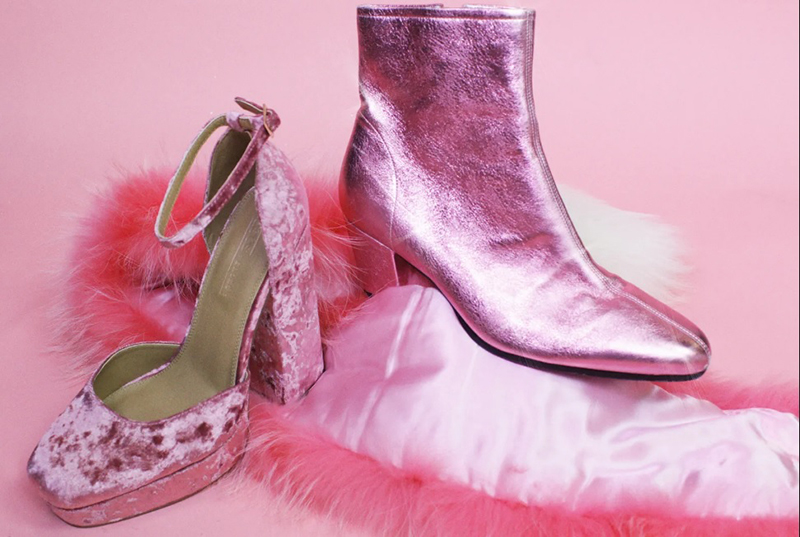
What Is Millennial Pink and Why It Is So Popular?
History of Millennial Pink
A light shade of pink that gained popularity in the latter half of the 2010s and is also known as Tumblr pink and Scandi pink is referred to as Millennial pink.” The Cut, a website that covers fashion and lifestyle, was the first to use the term “millennial pink” in 2016. The term is used to describe a range of shades that go from beige with a hint of pink to a peach-salmon hue.
In 2014 and 2015, fashion and design blogs started featuring interiors, clothing, and accessories in various shades of pale pink. This was the beginning of the trend’s rise to prominence. It was a departure from the bright and bold colors that had dominated fashion and design in the previous decade. The color was seen as a departure from that trend.
The color Millennial Pink rose to prominence in part due to the perception that it was gender-free and could therefore be enjoyed by either men or women. In addition to this, it was connected to a new school of feminism that emphasized gentler and more nurturing characteristics. Millennial pink was frequently employed in the fashion industry as a way to feminineize traditionally masculine silhouettes, such as tailored suits and bomber jackets.
The color’s popularity continued to rise, as evidenced by the increase in the number of advertising campaigns and products that featured it. It was also adopted by celebrities, who started wearing it on the red carpet and in their daily lives as a result of its popularity. By 2017, millennial pink had become an extremely widespread color, showing up everywhere from cosmetics and furniture to furniture and food packaging.
The Enduring Appeal of Millennial Pink in Fashion, Design, and Marketing Today
Even though it has seen a slight decline in popularity since reaching its zenith in 2017, Millennial Pink continues to be a popular color in a variety of fields, including fashion, design, and marketing. Because of its gentle and calming qualities, it continues to be popular among a large number of people, and it is frequently utilized in interiors that are minimalist or inspired by Scandinavia.
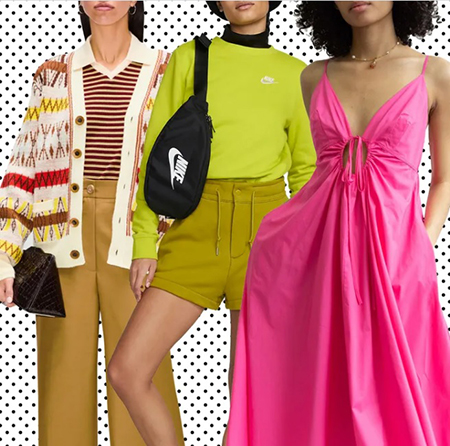
Other colors, such as Gen Z yellow and mint green, have taken millennial pink’s place as one of the most popular colors in the fashion industry. Despite this, it can be found in a number of different collections and continues to be a popular option for accessories and footwear.
Brands and marketers have also taken to using the color Millennial Pink as a means of appealing to younger customers and consumers. Products marketed toward millennials and Generation Z frequently make use of it in their branding and packaging.
Although the popularity of millennial pink may have reached its peak, the color and trend continue to be recognized and popular in the world of fashion and design.
Millennial Pink has become a popular trend in the past few years.
Millennial Pink in fashion industry
Millennial pink has emerged as a popular choice among younger generations of fashion consumers, and major companies like Urban Outfitters, ASOS, and H&M have embraced this trend by offering pieces with millennial pink accents that add an edgy and modern touch to any wardrobe. [Citation needed] Millennial pink has emerged as a popular choice among younger generations of fashion consumers. Millennial pink is showing up in the branding and advertising strategies of businesses that are trying to attract customers who fall into the millennial age bracket. This trend goes well beyond the realm of fashion and accessories.
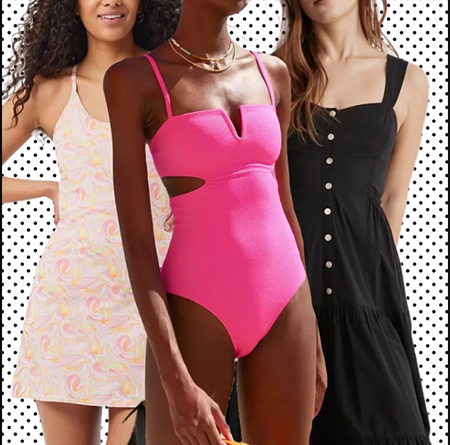
Companies have the ability to create an emotional connection with their customer base as well as demonstrate that they have an understanding of the fashion preferences of younger generations when they use the color millennial pink as part of their visual identity. Because of this, millennial pink has emerged as the color of choice for the marketing strategies of a diverse range of businesses, from cosmetics manufacturers to businesses that specialize in the delivery of food.
In today’s highly competitive market, brands have the opportunity to differentiate themselves from their competitors by capitalizing on the modern appeal and nostalgic vibes of Millennial Pink. Consequently, if you are in the fashion industry or any other sector, you should think about incorporating this captivating color into your visual identity to appeal to younger consumers and create an emotional connection that will last. Millennial pink, the fashion industry, branding and advertising, visual identity, emotional connection, and contemporary appeal are some of the keywords that can be used here.
Millennial Pink in branding and advertising
Branding and advertising strategies are making use of the millennial pink trend in order to connect with younger generations. These strategies have taken note of the trend and are using it. Numerous businesses are adopting the color known as “millennial pink” as part of their visual identity in order to become more approachable to the younger generation and to attract their interest. This pattern is especially obvious in advertisements for beauty services, food delivery services, and technological devices directed toward millennials.
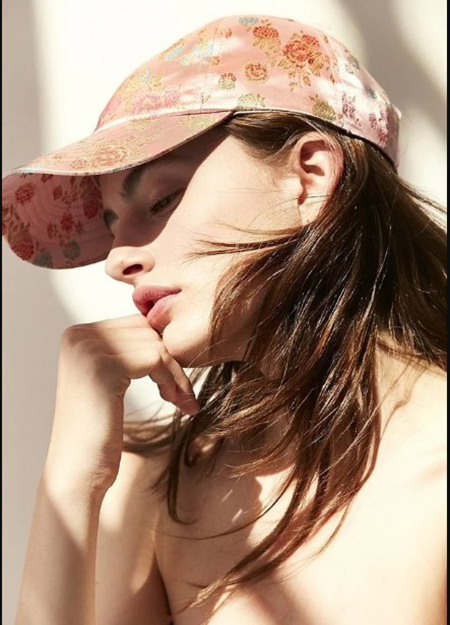
The use of millennial pink in branding enables businesses to establish an emotional connection with customers by evoking feelings of nostalgia and familiarity. This, in turn, gives customers a sense of belonging to the brand. In addition, due to the fact that it is both daring and understated, Millennial Pink is an excellent tool for businesses that wish to differentiate themselves in the market without appearing to be overbearing. This trend has been quickly adopted by the fashion industry, and other industries are following suit by incorporating Millennial Pink into their marketing strategies in order to compete.
Businesses are able to stay ahead of the curve and maintain their relevance in the modern market if they incorporate millennial pink into their branding and advertising. As the millennial pink trend continues to gain traction, it has proven to be an effective instrument for developing a distinct visual identity and establishing an emotional connection with customers. Millennial pink, branding and advertising, visual identity, and emotional connection are some of the keywords that can be used here.
Use of Millennial Pink by different companies and their marketing strategies
There has been a rise in the number of businesses of all sizes adopting the use of the color Millennial Pink in their branding and advertising. This color palette has been used in visual identities and advertising campaigns across a variety of industries, most notably in the cosmetics, clothing, and food delivery services industries that are aimed specifically at millennials. The ability of millennial pink to conjure up feelings of comfort and familiarity, as well as to forge an emotional connection with consumers, is a significant part of the color’s widespread allure. In addition, the use of millennial pink makes it possible for businesses to differentiate themselves from the other companies that are competing with them in the market.
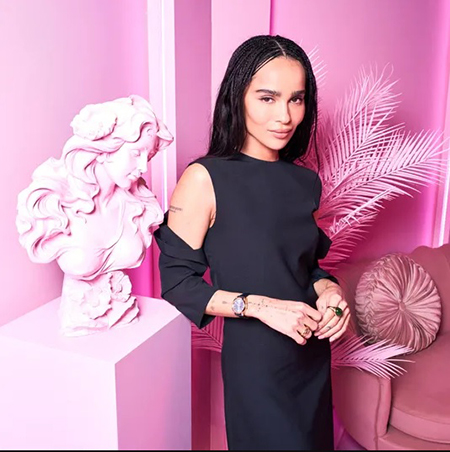
Companies are staying ahead of the trend and remaining relevant in today’s market by employing clever advertising strategies that incorporate millennial pink. This helps the companies stay ahead of the trend and remain relevant. The fashion industry has transformed this color into a potent tool, and it has also been able to successfully transition into other industries. Companies continue to find success with the use of the branding and advertising strategy known as “Millennial Pink” because of the color’s capacity to successfully create a powerful visual identity and an emotional connection.
Design: Why Millennial Pink Is the Color of the Moment
Millennial Pink (also known as Tumblr, Scandi, Scandi-chic, or Scandinavian pastel) is having a major fashion and home décor moment. This versatile shade of pink can be found on everything from the runways of Fashion Week to the pages of interior design magazines.
So, what is the appeal of Millennial Pink? Experts attribute its widespread appeal to its versatility—it complements a wide range of color schemes and blends seamlessly with any wardrobe. Whereas bright pinks may be too much for some, millennial pink has more subtle tones that require maturity and sophistication. It is also genderless, so it can be worn with any type of clothing, regardless of sex or gender identity.
In terms of lifestyle trends, the rise of the “minimalist movement” over the last decade is likely what drew attention to Millennial Pink; its modern yet organic qualities effortlessly capture the essence of minimalism. It’s no surprise that designers have taken notice and incorporated Millennial Pink into their collections, as it has been dubbed “the new neutral” by mainstream media outlets such as Business Insider and Forbes.
Finally, Millennial Pink embodies modern living like nothing else before it, lending itself to an overall sense of sophistication without sacrificing trendiness and style. With the ability to bring warmth and joy at the same time, it’s easy to see why this color will be popular for a long time!
Beauty and Fashion Trends Using Millennial Pink
Millennial pink is now one of the hottest beauty and fashion trends. The color, which is somewhere between blush and salmon, has been used to create eye-catching looks that suit a wide range of skin tones. This color is everywhere, from Instagram feeds to high-end department stores.
Millennial pink can be found in everything from lipsticks and eyeshadows to highlighters and contours. Pink shades that are natural and dreamy, such as rose quartz, mauve, and peony, are ideal for creating effortless yet glamorous everyday makeup looks. Alternatively, to make a stronger statement, pair this versatile shade with bolder colors like purple or dark bronze. Millennial pink will be an undeniable source of wardrobe inspiration no matter what your style is, whether you’re taking selfies or going out on the town.
In terms of fashion, millennial pink can be found in everything from dresses and skirts to jackets and accessories, including leather handbags and statement jewelry. For those who enjoy feminine touches in their aesthetic, its muted rosey hues feel both elegant and modern. Some standout pieces include pastel pink blazers, wrap dresses worn both day and night, airy tops for summer days, and shorter denim styles adorned with fringe. Additionally, softening darker palettes with pink cardigans provides floral vibes when paired with tailored black trousers or mini skirts that channel a grunge effect.
By incorporating millennial pink into your wardrobe or experimenting with different makeup application techniques, any fashionista at heart can easily recreate aesthetics with universal appeal!
Exploring the Pop Culture Impact on Millennial Pink
Exploring the Pop Culture Impact on Millennial Pink is an intriguing research project about the current millennial trend of pink clothing and other pink-related items. It has become a symbol of being current and fashionable, but how did this happen? How did it get the nickname “millennial pink”? Could it be related to popular media or even pop culture icons? This article investigates these questions by examining some of the most visible examples in the twenty-first century.
Millennial pink did not begin as a fashion statement; early adopters were simply inadvertently surrounded by the color. Since 2001, the tone of chromatic pink has been represented in a wide range of products, particularly in tech gadgets, home décor, and electronics. These brands had unintentionally created what we now call Millennial Pink, a soft, muted pastel hue that provides a level of accessibility for all who aspire to live their best lives. As more fashionable people adopted it as part of their aesthetic, the centuries-old color resurfaced on the cultural map and has since been featured in a variety of media, including advertising campaigns and television shows. Vogue dubbed it “the new black” in 2013, and Pinterest reported that searches for “millennial pink” increased by 120%.
As this subtle shade gained popularity, many designers and brands incorporated it into everything from athleisure wear to interiors. Yet, as everyone began reimagining classic pieces in such pastels—from furniture to footwear—one question arose: Who started the love affair with millennial pink?
Because so much pale pink cultivates both notions for those who seek natural color palettes outside conventional shades (see Bone Broth Protein Desserts), its adoption today exemplifies many larger social trends that millennials engage with today—namely health consciousness and sustainability initiatives (i.e., eating clean; organic grains over packaged cereals). References within modern art music also demonstrate how well it can occasionally clash with alternative sports themes (as on Billie Eilish’s album cover), whether onstage performances held during major events (see Halle Berry’s Cannes premiere dress choice) or only buzzing across digital interfaces (Instagram page IJustMetMe provides our requisite positivity memes).
Analyzing millennial pink representations across multiple platforms reveals how this pleasant overtone continues to influence global cultures today. And, given its remarkable versatility and current popularity among forward-thinking styles and designs—however simplistic they may be—concepts of comfort stand out as well (for example, ‘Radiant Orchid, redefining feminine identities). As a result of the countless subcategories propelling each product’s hype train beyond just a fashionable accessory but instead a reflection on issues increasingly surrounding consumerism, Millennial Pink’s legacy will live on far into the future.
Where to Buy Products That Feature Millennial Pink
There are a number of brands that specialize in offering amazing products at affordable prices when looking for stylish items featuring this stunning color trend. Lauren Conrad’s Paper Crown collection is classic yet modern, with millennial pink tones and geometric patterns. Hundreds of bedding sets, rugs, pillows, towels, storage bins, and other items in various shades of millennial pink are also available at Urban Outfitters. The selection is constantly changing, so come back often if you’re looking for something new or different!
If browsing online options feels overwhelming, there are plenty of physical stores that sell a wide range of amazing products, from clothing to home decor items with feminine accents like millennial pinks. Anthropologie has a large selection of robes and nightwear, as well as dreamy duvet covers in sweet pastel colors that are ideal for the occasion. Target, too, sells a variety of items with their trademark combination of chic brand names and affordability, including lounges in millennial hues! Serena & Lily and West Elm, both of which sell comfortable couches and armchairs with distinctively fresh palettes, sell furniture specifically designed to bring forth transitional styling elements through alluring rose alpaca textures and peach blossom colors.
Finding personal items fitting the criteria of millennial pink’ should never be difficult, no matter where you choose to search, whether it’s your favorite mall retailer or an independent boutique shop, given the sheer number of shopping destinations offering these ubiquitous designs across lines like clothes, cushions, and more! The perfect piece incorporating this mesmerizing hue can undoubtedly be found with a little legwork—even without spending much money at all.
Final thoughts on the future of Millennial Pink
Millennial pink may have peaked in popularity, but the color remains a recognizable and evergreen trend in fashion and design. Even though it has lost popularity in the fashion industry to other colors, it remains a popular choice for accessories and footwear, and it has evolved into an essential component of interiors inspired by minimalism and Scandinavian design.
As time passes, we can expect to see the use of millennial pink in a variety of industries, including fashion, design, and marketing. On the other hand, similar to how other fashions evolve over time, this one may eventually become obsolete and give way to more exciting color palettes. For the time being, however, the millennial pink trend remains a notable and significant development that merits investigation and incorporation into branding and advertising strategies.
Conclusion
Millennial Pink is a fresh and versatile color that will add a modern touch to any space. It’s widely available in furniture, paint colors, fabrics, and other home decor items from stores such as Home, Target, and Anthropologie, so you can easily incorporate this trend into your own home! Whether you use small pops of the color through pillows or go all out with cabinets and walls saturated in millennial pink, it will make a statement.
Excerpt
Millennial pink is a popular color that has emerged in recent years. It ranges from subtle blush tones to bright and vibrant shades, making it extremely versatile and suitable for use by people of all ages. This blush hue can be found everywhere, from fashion to home decor, and its popularity is growing.
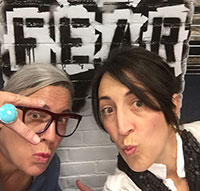
We’re Emma Carole Paradis and Kimberly Carole, the owners and designers of Impeccable Nest, based in Bedford, New Hampshire. A mother-daughter team with a love of design. Originally from Manhattan Beach, California, now based in Bedford, New Hampshire, we bring a Southern California cool and New England tradition to our design. Not only do we work together…we also live together in a multi-generational home…and a home that they are known to design for others.
